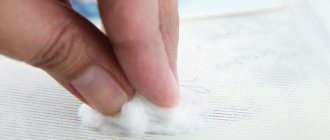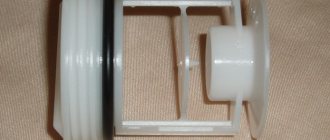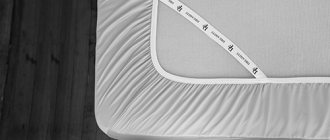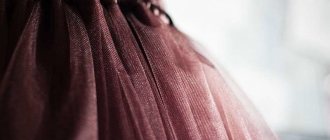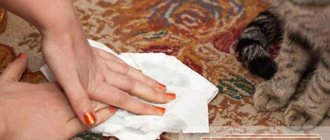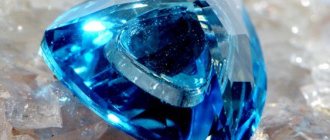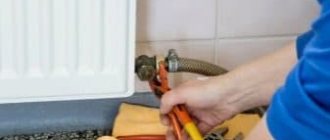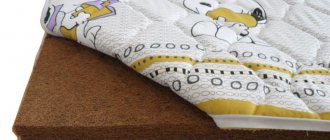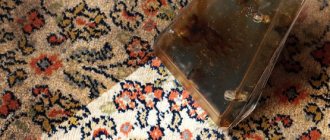Dry cleaning
is a procedure for cleaning clothes and other things using chemical solvents (that is, not water, but other liquids).
This procedure is performed by a dry cleaning machine.
The main task of dry cleaning is to remove those stains and dirt that cannot or cannot be removed with regular washing. Below we briefly explain how the dry cleaning process works. There are 4 main solvents used for dry cleaning. These are active liquids that are hazardous to health, harmful to the environment, but harmful to varying degrees. Here is a list of these solvents:
- Perchlorethylene
- Hydrocarbon
- Silicone
A dry cleaning machine is a complex device, which, if you imagine it VERY roughly, resembles washing machines in principle, but in a solvent dry cleaning machine there is not only a tank and a motor, there is a refrigerator, a distiller and other modules. The machines are compact and full-size, divided by the type of solvent used (that is, a specific machine is designed for a specific solvent), as well as by the number of tanks: single-tank, two-tank and three-tank.
Dry cleaning operation diagram.
Content
- 1 Basic information about the dry cleaning process
- 2 Dry cleaning machine manufacturers
- 3 History of the development of dry cleaning
- 4 Modern types of dry cleaning
- 5 Stages of working with clothes in dry cleaning
- 6 Cleaning in perchlorethylene
- 7 Aquatex 7.1 Standard dry cleaning process steps
- 10.1 Finishing operations
- 11.1 Dry cleaning machines
Basic information about the dry cleaning process[edit]
The first evidence of chemical treatment of clothing dates back to the Roman city of Pompeii. There, records were found of washing using an alkaline aqueous solution, ammonia and ammonium. Since ancient times, people have been able to remove dirt from the surface of clothes using chemicals. In Pompeii they used lye - an aqueous infusion of wood ash, consisting in a solution mainly of potassium and sodium carbonates. It has a highly alkaline reaction. Therefore, it was previously used for washing and laundry instead of soap, for tanning leather, etc. In a broad sense, lye is a chemical solution containing some kind of alkali (mostly caustic). Ammonium in various chemical forms is still actively used in washing powders.
Unisec dry cleaning machine
The moment of “discovery” of dry cleaning is considered to be the story when petroleum products were accidentally spilled on a greasy fabric and it was discovered that a chemical solution derived from petroleum dissolves fats. This point is poorly covered in the sources. It is only known that the effect has been known since the 1840s and the first company involved in washing with solvents was Jolly-Belin from Paris. Next, flammable ones were used as a solvent for removing stains: kerosene, gasoline, camphene and other already known liquids. In the 1930s, perchlorethylene was produced, the first solvent with the same high level of dissolution of contaminants, but not explosive. From that moment on, dry cleaning in a machine became possible and such machines appeared in the 1940s.
Unisec dry cleaning machine
The operating principle of a dry cleaning machine is generally common to all machines of this kind. The dry cleaning machine consists of the following parts:
- Solvent tank
- Pump
- Filter
- Washing drum
Everything is simple here: the pump pumps solvent through the machine, the drum rotates and washes, the filter collects dirt, after which the solvent returns to the tank. This cycle is repeated many times in accordance with the selected program. Clothes are dried in the same tank when hot air is supplied. Since solvent vapors are very harmful to humans, the washing and drying cycle is closed and after washing the solvent must be completely removed from the clothing and isolated in the tank. To do this, hot air with solvent vapor is forced through a distiller, where the solvent is evaporated at the nozzles and sent to the tank. There are many options for equipping dry cleaning machines, since each type of solvent has its own equipment options.
Front panel of a Union dry cleaning machine.
Peculiarities
Various chemicals can be used to thoroughly clean the car interior. Fortunately, today you can find a great variety of effective products on sale that allow you to very well clean all the necessary surfaces.
Experts say that cars that are in use every day must undergo high-quality and complete dry cleaning at least once every 6 months . This applies to both professional and DIY home cleaning.
History of the development of dry cleaning[edit]
Petroleum products were first used to clean clothes by the Frenchman Jean Baptiste Jolly back in 1825. He noticed that the tablecloth on the dining table in his home had lost several old stains after the maid accidentally spilled kerosene on it while refilling the lamp. This gave him the idea of opening the world's first dry cleaner, where clothes were cleaned exclusively with kerosene.
It is noteworthy that the dry cleaning method proposed by Jolly remained a secret for a very long time, and the British called it “French cleaning”. Jolly improved the technology over time, moving from pure kerosene to the use of a solvent he called “Camphin,” which, however, also burned well and could be used in lamps.
It is worth noting that dry cleaning was actually invented much earlier. Even the term “dry cleaning” has been used since ancient Roman times, when various absorbent powders and substances and powders were used to clean textiles and remove oily stains from clothing.
Despite the obvious advantages of dry cleaning proposed by the French, the transition to it from regular washing was extremely slow. And although the owners of laundries conducted an experiment back in 1880 and found out that preparing, washing and ironing one jacket took up to four hours in total, while dry cleaning was several times faster, this contributed little to progress. At the same time, dry cleaning did not become more popular even after it was mechanized in 1869, by the way, not by the French, but by the British.
Only after 1920, when a new solvent, perchlorethylene, appeared and quite efficient and reliable machines for dry cleaning with it were invented, household dry cleaning became a reality. And it finally came into everyday life after the end of World War II, thanks to the fact that Western industry was able to switch from the production of military goods to civilian laths, and many enterprises began to work closely on the development and production of modern equipment for this industry. When opening a dry cleaner, you need to draw up a business plan; we recommend that you familiarize yourself with this material: draft business plan. In principle, opening a dry cleaner is no different from other types of business in terms of the principles of building a plan.
Cleaning in perchlorethylene[edit]
This is the most common type of dry cleaning. Perchlorethylene is used as a solvent and is suitable for removing stains and dirt from most types of mass-produced knitwear and clothing. This substance can not only remove dirt from products, but also dissolve fat. This type of cleaning cannot be called gentle, since along with grease and dirt, the product often loses a piece of its original color, as well as its water-repellent impregnation, which must be restored afterwards. But since such dry cleaning successfully copes with a huge number of stains and types of dirt, it remains the most popular today. If a product can be safely cleaned in perchlorethylene, it is most often marked with a circled "P". Cleaning in hydrocarbon solvents This technology appeared not so long ago and replaced cleaning in freon R-113. This happened because in 1987, most European countries abandoned the production and use of this composition, which destroys the ozone layer of the atmosphere. Since then, for products that cannot be cleaned in perchlorethylene (they are marked with an “F” in a circle), hydrocarbons have been used. Such dry cleaners are already quite common, including in Russia.
Popular brands
Many brands produce high-quality and effective chemical cleaning products for car dealerships. These include both large and little-known manufacturers. Let's look at a small rating of top cleaning products that are in great demand among modern car owners.
Liqui Moly 7586 . The top best solutions for chemical cleaning opens with this popular product, which is produced for treating woven surfaces. Liqui Moly 7586 is a high-quality German product that contains light solvents. The main disadvantage of the product is its relatively high cost compared to its small volume.
- Sonax 306200 . This foam cleaner is liked by many motorists and is in great demand. Sonax is also made by a German manufacturer. The product contains no dangerous or aggressive components, and the product does not emit any strong unpleasant odors. As in the case of the product discussed above, the Sonax 306200 does not suit many consumers with its high price.
Aquatex[edit]
This technology is also called “wet cleaning” or “aqua cleaning”. Here the solvent is water with special detergents and softening additives. This is the most modern and gentle cleaning technology, optimal for the most delicate items, including wedding dresses and much more. Aquatex is also the only available cleaning method for a number of combined products. Thus, jackets are now common in which fur trim is combined with polyurethane fabric, which cannot be cleaned in perchlorethylene, but can only be washed, while fur cannot be washed. A water cleaning machine is the only way out in such a situation. In any case, when sending things to the dry cleaner, you should ask the receptionist what method they will be cleaned in order to avoid problems with them due to the inattention of the staff, which, although rare, still sometimes causes damage to the products.
Steps in a standard dry cleaning process[edit]
Conventionally, we can distinguish five main stages of dry cleaning: receiving the product, sorting incoming items, preliminary stain removal, cleaning in the machine, and finishing operations.
How to properly remove specific contaminants yourself at home?
Often unexpected dirt remains on the carpet. In each case, there are tricks that allow you to restore the beautiful appearance of the coating. This article will tell you about removing various old stains.
Lizun
Has the consistency of jelly. A fresh stain from a toy can be removed using various traditional methods:
- peroxide,
- soda,
- laundry soap and the like.
Dried dirt is first carefully scraped off with a knife. Next, you will need to treat with special powders or shampoos for cleaning carpets with active ingredients.
Read about ways to remove slime from carpet here.
Plasticine
To harden the stain, you need to use ice cubes. They are wrapped in film and gently moved over the plasticine until it becomes hard. Now it can be easily removed using a plastic knife.
The remaining greasy trace can be removed by any means such as:
- "Vanish"
- “Selena Kovrol” and so on.
The main thing is that they are strong enough to break down fat molecules. Methods for removing plasticine from carpet are described in more detail here.
Mercury
It is necessary to close the door to the room and open the window . Collect mercury balls using a rubber bulb or syringe and release them into a glass jar. Treat the carpet with bleach or potassium permanganate.
To avoid damage to the pile, you can use a solution of laundry soap (2 tablespoons) with soda (1 tablespoon) + 1 liter of hot water.
Read about how to properly and safely remove mercury from a carpet here.
Blood
Fresh stains should be removed with a paper towel or cotton wool soaked in hydrogen peroxide. Ammonia (tbsp / 500 ml of water) will help to completely discolor the marks.
Zelenka
You can quickly deal with fresh contamination:
- regular alcohol
- ammonia,
- peroxide.
You can also use a stain remover. Another tip is to expose the rug to the sun. The brilliant green itself becomes discolored from ultraviolet light .
Smells
They are easy to deal with:
- vinegar,
- lemon juice,
- coarse table salt,
- Various aerosols can be sprayed periodically.
You will find effective recipes for removing various odors from carpet in this article.
Urine marks
You can remove a stain without a trace only if it is fresh. With old marks, it is better to go to dry cleaning.
To remove a stain, you need:
Collect all liquid with napkins.- Then prepare a solution of vinegar (1 part) with water (3 parts).
- Water the area generously with this liquid, open the windows and leave for a couple of hours.
- After this period, sprinkle the stain with regular soda.
- When the soda has absorbed all the moisture, you can simply sweep it away with a broom, brush, or suck it in with a vacuum cleaner.
Finally, spray a small amount of your favorite fabric softener diluted with water.
Sorting[edit]
This stage consists of collecting batches for loading into the cleaning machine. Items are sorted according to the composition of materials, color and degree of contamination. Due to the different characteristics, each material behaves differently in the cleaning machine, and color sorting is necessary to ensure that dyes from one product do not transfer to another. Most often, sorting is performed directly in the workshop where dry cleaning will be performed. Preliminary stain removal At this stage, the most contaminated parts of the products are processed to achieve the maximum final quality of dry cleaning. Also, those types of stains are now removed that are not removed in the machine under the influence of solvent and heat, but are permanently fixed on the product, which makes their subsequent removal impossible. To remove stains, detergents and solvents are used here, such as ammonia, acetic acid and other complex stain-removing agents, depending on the origin of the stain. Cleaning is carried out on special tables with local lighting and an exhaust hood. In addition, guns that supply compressed air and steam are used here. As a result, a powerful air flow together with water, solvent and detergents removes stains.
What types of dry cleaning products are there and how to use them?
join the discussion
Share with your friends
Cleaning affects almost everyone. There is no one in the world who does not clean at least once. Various cleaning agents are used for cleaning, each of them differs in composition, which directly affects the effect of the work performed. How to distinguish professional chemicals from household ones, how to choose the right product for cleaning a contaminated surface are questions that concern many.
Cleaning the car[edit]
In special dry cleaning machines, the ability of solvents to draw out all the contaminants contained in the fibers, dissolving them, is used to the maximum. Typically, such a machine consists of a number of main components, including:
- drum (main washing tank) with a loading capacity in the range of 12-32 kg;
- solvent tanks used depending on the type of items being processed;
- distillation system;
- filters;
- hood;
- refrigeration circuit.
Modern dry cleaning complex
All modern dry cleaning machines operate exclusively in a closed cycle. That is, perchlorethylene, which has already been used and has absorbed contaminants, is sent through filters to the distillation unit. This is a sealed container made of stainless steel, where distillation occurs - boiling of the solvent and further condensation of its vapors. After this procedure, the solvent again becomes completely clean and can be used further. Distillation can be performed separately or in parallel with cleaning things in the machine, depending on the model.
After distillation, a jelly-like substance is formed in the tank, which contains dirt, chemical materials and a small amount of solvent. This is precisely the waste from dry cleaning, called sludge. To increase the safety of personnel at dry cleaning enterprises, all modern machines are equipped with adsorbers - special devices that absorb solvent vapors generated during drying, thereby ensuring their complete removal from all products and the machine drum. The dry cleaning cycle involves not only the cleaning itself, but also spinning, drying, deodorizing and even solvent recovery. Nowadays, in addition to the main solvent, additional detergents (so-called cleaning enhancers) are often used to help move stubborn dirt into the solvent.
The cleaning effect is based not only on a chemical, but also on a mechanical effect on the products being processed, expressed in the use of a rotary drum similar to a conventional washing machine, only very large. Friction and rolling of things in the drum allows the solvent to penetrate into them better, which ultimately significantly improves the quality of processing.
An old dry cleaning shop. A table for steam ironing at a dry cleaner. This is what a large dry cleaner looks like, capable of serving thousands of people.
Finishing operations[edit]
This is the last stage of dry cleaning, the basis of which is ironing things, usually using special ironing tables and presses or even mannequins. Ironing on a special table is performed using industrial-type steam irons - this is the most common type of finishing today. After ironing is completed, items go through quality control and are packaged. Upon completion of all these manipulations, they are considered ready for delivery and await the arrival of the customer. But everything doesn’t always go well - sometimes one item or a batch of items has to go through one or all stages of dry cleaning several times to achieve the required result.
Tips for choosing
You need to be very careful when choosing the right cleaning product for your car interior. Let's find out what you need to pay special attention to when looking for a good cleansing composition.
First of all, you need to decide what type of dry cleaning you want to use to treat the car interior. As a rule, any products indicate what kind of dry cleaning they are produced for , because dry and wet procedures will require different types of compositions.
- It is equally important to consider whether the liquid contains an appropriate preparation for cleaning a particular material , be it textiles, leather, plastic or chrome. It is not recommended to clean absolutely all surfaces with only one liquid. The exception is some universal-type compounds.
- Car interior cleaning products vary in the type of effect they have. Thus, there are fast-acting products on sale that can help get rid of old stains. In addition to fast-acting products, slow-acting products are sold . As a rule, the latter can be used to combat any type of stain.
- An important requirement that applies to absolutely any cleaning compositions is their level of safety. When choosing a specific product, it is important to pay attention to this indicator. Chemicals must be harmless to human health .
- If you want to effectively clean the interior of your car without harming any of the materials, then it is advisable to give preference only to branded products . Today there are many large manufacturers on the market that produce high-quality and safe cleaning fluids, so finding a good option is not difficult.
- Before purchasing, it is advisable to carefully inspect the canister or spray bottle of chemical interior cleaner. Any packaging must be hermetically sealed and there must be no leaks or damage.
high-quality and highly effective car dry cleaning products only in specialized stores , which are found in almost every city. Only in such retail outlets will it be possible to find or order original products from famous brands.
Source
In total, there are four main types of dry cleaning:[edit]
- Dry cleaning in perchlorethylene (dry dry cleaning) is the most common and well-known method of dry cleaning. Operating principle: perchlorethylene dissolves fat and, along with it, removes dirt from the product. This method cannot be called gentle, because... Together with grease and dirt, the product may lose its original color, water-repellent and protective impregnation, which then must be restored.
- Water cleaning is an environmentally friendly technology, because... it does not use strong chemicals (organic solvents, acids, alkalis). Water cleaning is based on the principle of minimal mechanical impact on the product and maximum environmental safety in relation to the environment.
The difference between water cleaning and washing:
- The absence of powders and the presence of liquid additives, which, in addition to the washing effect, preserve the shape of the fiber and prevent shrinkage and dye stripping.
- Reduced mechanical impact and low processing temperature (usually no more than 27 degrees).
For some types of products, water cleaning is the only acceptable processing method. For example, for brightly colored products trimmed with sparkles, rhinestones, etc., combined products, down jackets, wedding dresses, soft toys.
- Hydrocarbon dry cleaning is a delicate, gentle dry cleaning that does not disturb the structure of the fabric and carefully removes dirt. The big advantage of hydrocarbon chemicals is that textiles and leather become soft to the touch, the color remains rich and things do not have a dry-cleaning smell. She is also careful with fittings. It is also worth noting that this is an environmentally friendly way of processing products. The only requirement is that the product should not be heavily soiled, because... Gentle cleansing simply will not cope with severe contamination.
Dry cleaning in a hydrocarbon environment is the most suitable type of treatment for products made of genuine leather, suede, fur velor (sheepskin coats) and fur.
- Silicone dry cleaning - uses pure, liquid silicone. Like the previous type of dry cleaning, it is environmentally friendly, because... in essence, silicone is nothing more than “liquefied” grains of sand. We are talking about those natural grains of sand that formed the earth over 6 billion years. These grains of sand have nothing to do with the substances that pollute the air, which can contaminate the earth and poison the water.
